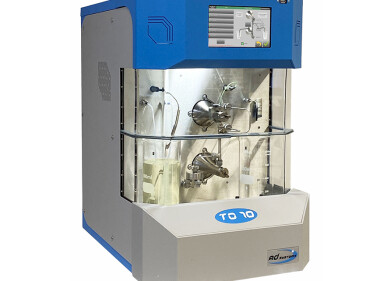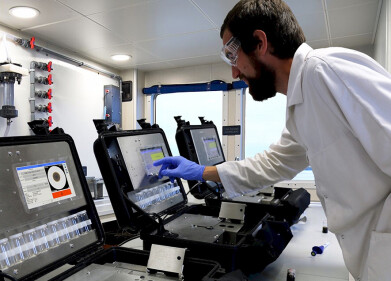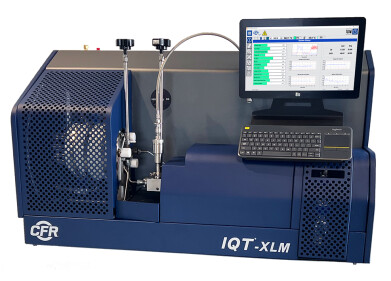Fuel analysis
Revised Marine Fuel Regulations Bring New era in H2S Testing
Nov 09 2010
The revision of the ISO 8217 bunker fuel specification by the International Standards Organisation (ISO) promises changes for fuel buyers and suppliers, but it was always a process undertaken with more than one result in mind. At a time when the industry is under pressure to blend increasing volumes of bunkers to meet demand for low sulphur fuel oil, parallel challenges of quality and safety are emerging. Among its changes, the working group tasked with revising the ISO 8217 standard has taken an important step forward by phasing in the introduction of maximum levels of Hydrogen Sulphide (H2S) content in marine fuel. The working group has amended the draft standard to specify a maximum permitted 2.00 parts per million (ppm mg/kg) of H2S in marine bunker fuel to reflect the potential risks that this chemical poses to the health of seafarers, port workers bunker supply personnel, inspectors and refinery personnel. And while in an ideal world, there should be no H2S present in bunker fuel, the new limit is both a reflection of the seriousness of the issue and recognition that new test methods are needed to improve detection.
The maximum parameter will be mandatory from July 2012. This is just one of a number of measures in the revision that help to promote the use of cleaner bunker fuel. It will also see the IP 570 test standard move from its current voluntary position to a mandated part of the fuel specification.
Until recently, the bunker industry relied on lengthy and complex analytical techniques for the determination of H2S, undertaken to the IP 399 test standard, a process with a number of drawbacks. As a result, the bunker industry is moving towards the adoption of a new test standard, IP 570, which is a liquid phase measurement that complies with the revised ISO 8217 marine fuel specification.
H2S presents a health risk through accumulation in the headspaces of storage tanks and marine fuel bunker tanks, dependent on factors such as storage time, elevated temperature, agitation and biochemical decomposition. H2S can also be a threat to day-to-day operations since it has the potential to corrode pipelines, storage tanks and other equipment components, which may cause mechanical problems including engine breakdown, delays and supply disruptions.
The key issue in delivering safer bunkers is to measure the potential that a fuel could have to release H2S over a period of time when the fuel is transferred, heated or agitated either onboard the ship or in other forms of transport. To make the IP 570 process easily available to the marine industry, SetaAnalytics (UK) has developed the H2S Analyser in response to demand for accurate and reliable testing method for H2S. The analyser is cost-effective, requiring no special training for the operator and no expensive chemicals., and removes the need for test preparations by laboratory technicians. It is also simple to use. Analysis is fully automatic and results are stored at the end of the test. The analyser software automatically detects leaks in the system and produces error codes and alerts if sample/test analysis is void. In addition to bunker fuel blends, the H2S Analyser can also be used to measure H2S in heating oil, gas oil, diesel, distillate marine fuel and kerosene, including aviation fuel. The H2S Analyser is the result of support for a new testing process from a number of industry stakeholders including bunker fuel testing specialist Lloyd’s Register FOBAS and a group of major international oil companies.
Digital Edition
PIN 25.6 Buyers' Guide
January 2025
Buyers' Guide Directory - Product Listings by Category - Suppliers Listings (A-Z) Articles Analytical Instrumentation - ASTM D7042: The Quantum Leap in Viscosity Testing Technology -...
View all digital editions
Events
Jan 20 2025 San Diego, CA, USA
Jan 22 2025 Tokyo, Japan
Jan 25 2025 San Diego, CA, USA
SPE Hydraulic Fracturing Technology Conference and Exhibition
Feb 04 2025 The Woodlands, TX, USA
Feb 05 2025 Guangzhou, China



















